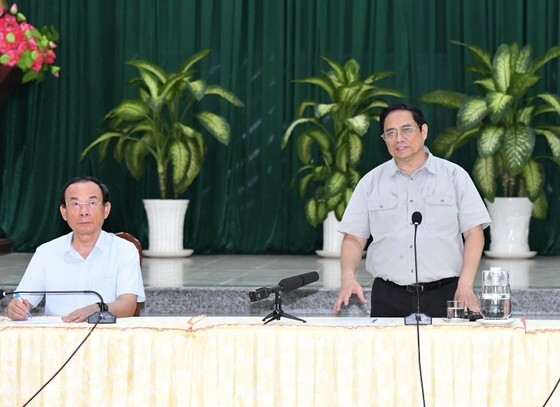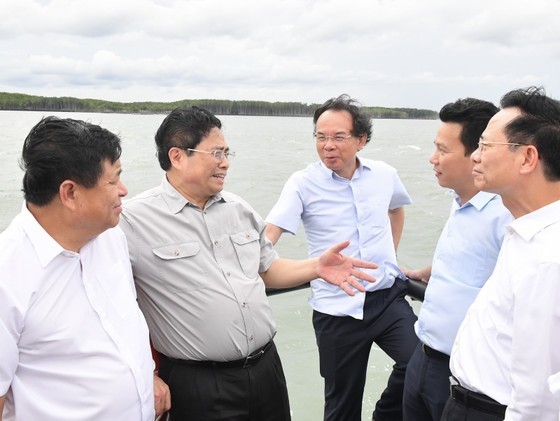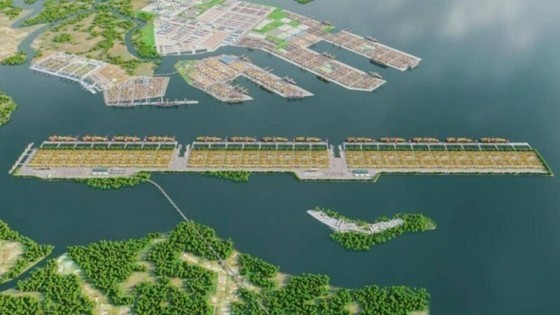 |
Prime Minister Pham Minh Chinh (R) speaks at a working session with HCMC's leaders on July 18. (Photo: SGGP) |
The Standing Board of the HCMC Party Committee delegated the Party organization of the municipal People’s Committee to direct the People’s Committee of the city, departments, and relevant units to carefully examine and collect opinions from the members of the Standing Board of the HCMC Party Committee to complete the project.
The competent sectors must ensure the project that is consistent with the planning and orientation of the Party Central Committee and HCMC, contributing to promoting economic efficiency and sustainable development. In addition, the project must pay attention to investment and synchronous development of transport infrastructure, technical infrastructure, and infrastructure of port services, and lessen impacts on the environment and people’s lives.
 |
PM Pham Minh Chinh makes a field trip to the Can Gio international container transshipment port. (Photo: SGGP) |
On July 18, PM Pham Minh Chinh made a field trip to the Can Gio international container transshipment port.
He asked HCMC to cooperate with relevant agencies to step up the study process and work with investors to accelerate project execution.
The PM emphasized that Can Gio international transshipment port has the ability to attract international transshipment of goods and compete with large ports in Singapore, Malaysia, and others in the region, and coordinate with Cai Mep – Thi Vai port to develop its strength.
 |
Design of the Can Gio international transshipment port |
Can Gio International Container Terminal is located on Phu Loi Isle in Thanh An Commune of Can Gio District in HCMC, nearby the buffer zones with an area of 93 hectares of the Can Gio Biosphere Reserve, and surrounded by Thi Vai and Theu rivers. However, the project will not penetrate the boundary of the biosphere.
Taking advantage of Can Gio located in the Cai Mep-Thi Vai marine fairway with bustling water transportation activities, the seaport covering an area of 570 hectares would be capable of receiving container ships of up to 250,000 DWT or 24,000 TEUs. The project built at a total investment capital of US$5.4 billion is divided into seven phases and expected to be finished in 2045. The first phase will be complete in 2027.
























